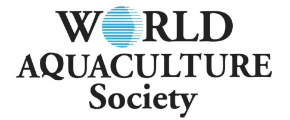THE DEVELOPMENT OF ATLANTIC SALMON AQUACULTURE IN ICELAND – ENTERING UNCHARTED WATERS
Over the past 10 years, aquaculture production of Atlantic salmon has grown rapidly in Iceland from less than 300 MT in 2008 to an expected 20 000 MT in 2018. Presently there are many applications for production licenses being processed that could further double or triple the production. Cage culture of Atlantic salmon is primarily restricted to the Westfjord and parts of the Eastfjord regions while other coastal areas are either too exposed and unsuitable for aquaculture, or farming is restricted due to proximity to angling rivers.
The East- and Westfjord regions are sparsely populated with small fishing villages that have suffered significant population decline in recent decades. In part, this is caused by the restructuring and centralisation of the fishing industry with little fishing quota being left in the small fishing communities. The development of aquaculture has proven to be real boon to these communities, creating new and more varied employment opportunities for young people.
The government and regulatory bodies were very poorly prepared for this sudden growth in aquaculture. Estimates of carrying capacity for different fjords were not available although that research is now underway. The structure of the regulatory bodies has been changed several times since 2008 with responsibility being shifted between different institutions. Finally, the legal framework for aquaculture is still under development, creating uncertainties for the future growth of aquaculture. A recent risk assessment conducted by the Icelandic Marine and Freshwater Research Institute has set the maximum limits to cage culture of salmon in Iceland to 71 000 MT without posing undue risk to natural populations. However, this estimate is based partly on weak assumptions and may place unnecessary restrictions to the development of salmon aquaculture. Furthermore, regulations are already in place which exclude salmon farming from the west and north coast of the country and from sites with close proximity to salmon rivers.
As in some other countries, the discussion about salmon farming in Iceland has been heated and polarised. On one hand, fish farming companies and local municipality leaders in the East- and Westfjords have emphasized the benefits of aquaculture for the communities. On the other hand, owners of angling rivers, angling societies and some environmental groups are opposing the development of salmon aquaculture and predict the demise of natural stocks due to genetic mixing, sea lice and pollution from fish farms. The debate is currently raging full force and does not appear likely to end with a resolution between the two camps. In this presentation we summarise the development of salmon aquaculture in Iceland and provide an analysis of the discourse.













